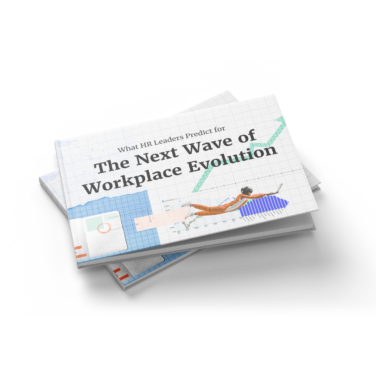It’s a thankless job most days. Surrounded by the expectations of everyone from the CEO to newly hired entry level employees, HR has to put out so many fires on an average day that their personal resources are stretched as thin as the patience of an employee waiting on a late paycheck.
It’s led to a lot of outcries from folks in the HR community and wondering is this just how it is? Is it inevitable that this job will lead to being overwhelmed?

Why HR is Hitting the Wall
The days of HR’s biggest challenges being annual reviews and benefits enrollment are ancient history. Now, HR is carrying an emotional load that would make even a seasoned therapist buckle.
“You are seeing people leave HR due to burnout,” Founder of Shine at Work and HR Consultant Karen Weeks said. “I know so many people who are either starting their own thing or moving into other areas of the business like chief of staff or operations because traditional HR isn’t for them anymore.”
HR professionals are having deeply personal conversations about mental health, reinventing traditional work models by standing up hybrid and remote work, and serving as a sort of first responder to workplace crises.
All the while, they are doing this while processing their own reactions to the same global events that are affecting employees.
"Trauma is the body's response to being overwhelmed by stress," says Katie Kurtz, an expert in trauma informed leadership. "While stress is a normal part of life, sudden, extreme, or prolonged stress can lead to trauma. Understanding this highlights how common and relevant trauma is in today’s workplace."
The current wave of fatigue among HR professionals can be attributed to several converging factors:
Increased emotional labor
HR’s role has expanded far beyond policies and procedures. These days, it often means walking people through grief, burnout, and breakdowns—all while managing your own stress. That constant exposure to emotional strain leads to what some are calling people fatigue.
The impact runs deep. In our Severance-style workplace poll, 1 in 5 people said they’d trade consciousness for work-life separation. It’s an extreme response—but a telling one, especially when HR is often the last line of emotional support in the workplace.
Competing priorities
HR teams must balance being employee advocates while serving as strategic business partners.
The duality of the role can create a kind of moral distress when organizational needs conflict with employee welfare, forcing HR professionals to navigate complex ethical territories on a regular basis.
“The last few years have been a real rollercoaster,” says Weeks. “Our role is to balance the needs of the business with the needs of employees. How can we create an amazing place to work, support and develop our teams and help the company grow within the means of the business as it is today? Over the last few years, that has been in conflict a lot more. And that hits HR the hardest normally.”
Resource constraints
Despite expanding responsibilities, many HR departments haven't seen corresponding increases in staffing or resources. This mismatch leads to overwhelming workloads and the inability to provide the level of support they know employees need.
“I think it’s a combination of companies always wanting a ‘lean’ HR team so they are asked to do too much without enough resources,” Weeks said. “Even when we advocate for our teams, often the final decision makers don’t understand the HR world enough that we can’t get through.”
Warning Signs That HR’s Running on Empty
This type of fatigue can set in differently for everyone. But it’s not unusual for it to manifest in some of the following ways.
- Emotional numbness or decreased empathy in response to employee concerns
- Physical and emotional exhaustion that doesn't improve with regular rest
- Difficulty maintaining professional boundaries
- Increased cynicism about organizational initiatives or employee issues
- Sleep disturbances and anxiety about work
- Reduced job satisfaction and questioning of career choices
“Leaders have to recognize that everyone responds to stress differently, and these responses can sometimes resemble other behaviors, like burnout or mental health symptoms,” Kurtz said.
Breaking the Cycle: Solutions for HR Leaders
For HR leaders in the C-suite, it’s not a good look if your own team is burnt out and can’t deal with the demands of their work. If you want to create a culture where other teams can thrive you’re going to need to do this with your own.
“Creating a culture of transparency, empathy, and empowerment within an organization is really the key to making all employees thrive, especially the people operations teams,” Eliza Jackson, Chief People and Administrative Officer at ButcherBox said. “This has to be the case all of the time, not just in periods of change or high stress. At ButcherBox, we try to do a lot of this through coaching programs and mental health resources.”
1. Implement Structural Support Systems
Organizations need to recognize that supporting HR professionals requires systematic changes:
- Establish clear boundaries around HR availability and response times
- Create rotation systems for high-stress responsibilities
- Provide dedicated mental health days specifically for HR team members
- Invest in additional HR staffing to distribute emotional labor
2. Develop Professional Support Networks
HR leaders should prioritize creating support systems:
- Establish peer support groups within the HR team
- Partner with external mental health professionals for regular debriefing sessions
- Create mentorship programs pairing experienced HR professionals with newer team members
- Foster connections with HR professionals from other organizations for shared learning and support
3. Develop Skills to Mitigate Burnout
Equip HR teams with tools to manage emotional demands:
- Training in trauma-informed HR practices
- Professional development in boundary-setting and emotional regulation
- Stress management and resilience-building workshops
- Regular supervision and case consultation opportunities
4. Create a Culture of Self-Care
Leadership must actively promote and model self-care:
- Normalize taking breaks and using vacation time
- Encourage work-life boundaries through clear policies
- Implement regular check-ins focused on emotional well-being
- Create spaces for team members to express concerns and challenges
“The key to preventing and managing stress, burnout, and trauma lies in fostering healthy, trusting relationships,” Kurtz said. “Trust isn’t automatic—it’s built gradually through consistent actions. Trauma may be a personal experience, but addressing it is a shared responsibility.
Moving Forward: A Sustainable Approach to HR
The sustainability of HR as a profession depends on acknowledging and addressing compassion fatigue. Organizations must recognize that supporting their HR teams isn't just about preventing burnout—it's about maintaining the health of the entire organizational ecosystem.
“Leadership and organizational culture play a key role in building a supportive environment for all employees, HR included,” Kurtz said. “A shift is needed—everyone, from executives to employees has to start taking ownership of creating a healthy workplace, HR can’t be solely responsible for employee wellbeing and culture.”
Leaders should consider:
- Regular assessment of HR team well-being through anonymous surveys and one-on-one discussions
- Development of clear protocols for escalating issues when HR professionals need support
- Investment in technologies that can automate routine tasks, allowing HR to focus on high-value human interactions
- Creation of backup systems ensuring no single HR professional bears too much emotional burden
For Weeks, a sustainable approach means direct involvement in the department's work and showing them a bit more of who she is.
“As an HR leader I try to be there for my team, roll up my sleeves so we are side by side in the mess,” she said. “I give them the space to be humans, make sure they truly take time off and breaks, and be vulnerable with them so they know they are not alone.”
At the same time, weaving in some insights gleaned from technology is never a bad idea and can help you get ahead of these things.
“Data is key to how you support people across the organization in a proactive way and understand how much each HR team member is holding without being totally reactive to the support needed,” says Jackson. “Biweekly employee engagement surveys help to get the pulse of the organization at a regular cadence to help inform where/when support is needed.”
What's Next?
Want more insights from HR leaders and tips on how to overcome the biggest challenges in people operations? Subscribe to the People Managing People newsletter and you'll get all the latest expert insights and tips delivered straight to your inbox.


